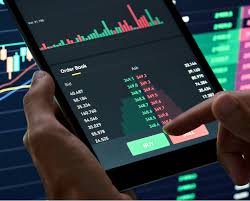Exploring the World of Trading Simulator Crypto

Exploring the World of Trading Simulator Crypto
The rise of cryptocurrencies has brought about a significant shift in how individuals approach trading and investment. For those looking to navigate this dynamic landscape, utilizing a trading simulator for crypto can be an instrumental tool.
To delve deeper into these features and benefits, Trading Simulator Crypto click here for an insightful video.
What is a Trading Simulator?
A trading simulator is a platform or software that replicates the real-world trading environment. It allows users to practice trading without risking actual money. This is particularly beneficial in the crypto marketplace, where volatility can lead to substantial losses if traders are unprepared. Trading simulators are designed to help aspiring traders develop skills, test strategies, and experiment with various methods of trading before committing real funds.
The Importance of a Trading Simulator in Crypto Trading
Many new traders find the cryptocurrency market intimidating due to its rapid price fluctuations and complex mechanics. A trading simulator offers several advantages that can help mitigate these fears:
- Risk-Free Learning: Simulators allow users to familiarize themselves with trading strategies and market trends without the risk associated with real trading.
- Market Analysis Skills: Users can develop analytical skills by observing real-time price changes and making decisions based on market conditions.
- Emotional Discipline: Trading simulators help users learn to manage emotions, which is critical in high-stakes environments like cryptocurrency trading.
- Strategy Testing: Traders can experiment with different strategies to see what works best without financial repercussions.
Getting Started with a Trading Simulator for Crypto
To begin using a trading simulator, follow these steps:

- Choose a Simulator: Research and select a trading simulator that focuses on the cryptocurrency market. Popular options include platforms like TradingView, Crypto Parrot, and eToro’s virtual trading feature.
- Create an Account: Sign up for the chosen platform. Many simulators offer free versions with virtual currency to trade with.
- Familiarize Yourself with the Interface: Spend time navigating the platform to understand its various features, charts, and tools. This knowledge will be essential when you start trading.
- Start Trading: Begin by making trades based on market research and analysis. Track your performance to analyze what strategies are successful.
Key Features of Trading Simulators
While there are many trading simulators available, several key features are crucial for effective learning:
- Real-Time Data: Access to real-time market conditions allows users to make informed trading decisions.
- Diverse Trading Options: A good simulator provides a wide range of cryptocurrencies, enabling traders to diversify their practice.
- Educational Resources: Some simulators offer tutorials and materials designed to enhance your trading knowledge and skills.
- Performance Analytics: Users should receive detailed reports on their trading performance, helping them identify strengths and weaknesses.
Benefits of Using a Trading Simulator for Crypto
The benefits of utilizing a trading simulator extend beyond just practicing trading.
Here are some of the critical advantages:
- Confidence Building: Gaining experience through simulated trading helps build confidence when transitioning to real money trading.
- Improved Strategy Development: Traders can collaborate on refining strategies based on the outcomes observed in the simulator.
- Saving Time: A simulator can speed up the learning process, allowing traders to learn from their mistakes without losing actual money.
Common Mistakes to Avoid When Using a Trading Simulator
While trading simulators are beneficial, traders should be aware of common pitfalls:
- Treating it Like a Game: Many users fall into the trap of treating simulations lightly, which can lead to bad habits. Always take the practice seriously.
- Neglecting Risk Management: Just like in real trading, it’s critical to use risk management strategies, even in simulated environments.
- Overconfidence: Winning streaks in simulations may lead to overconfidence, which can be dangerous when switching to actual trading.
Transitioning from a Simulator to Real Trading
Once a trader feels comfortable with their skills on the simulator, it’s time to transition to live trading. Here are some tips for a smooth transition:
- Start Small: Begin with a small investment that you can afford to lose. This approach reduces risk while you adjust to real market conditions.
- Apply What You’ve Learned: Use the strategies and skills you developed during simulation to inform your real trading decisions.
- Maintain a Learning Mindset: Keep tracking your performance and stay flexible in adjusting your strategies based on market conditions.
Conclusion
In conclusion, utilizing a trading simulator for crypto can be a game-changer for aspiring traders. By allowing users to practice in a risk-free environment, simulators offer invaluable experience and insights into the complexities of the cryptocurrency market. With the right approach and mindset, new traders can develop their skills, build confidence, and ultimately transition into successful real-world trading.